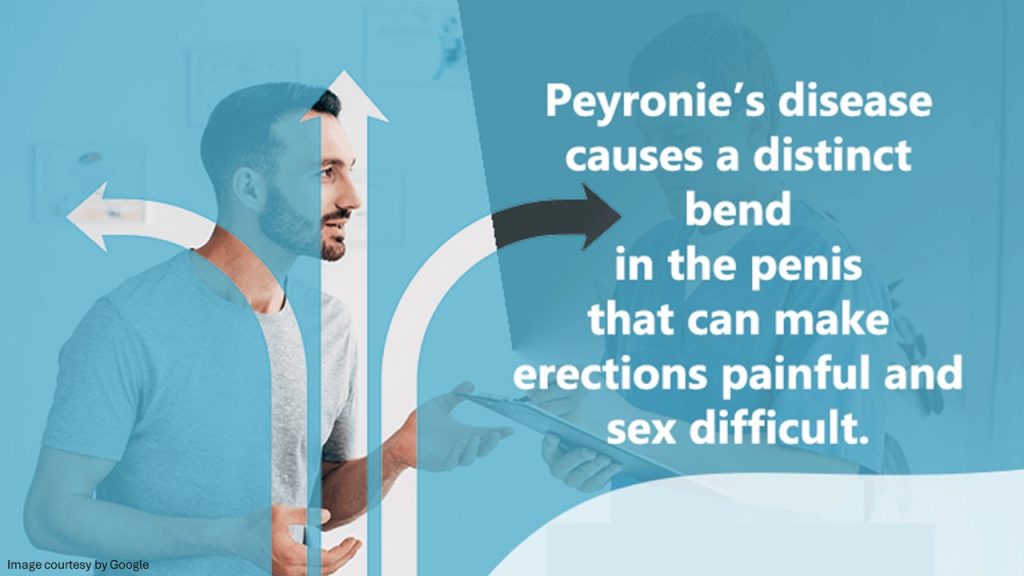Having a curved penis is common and isn’t a cause for concern. But it is a concern if it is unusually arched and you feel pain; if this is the case, then it is Peyronie’s disease. The penis is building up benign or noncancerous plaques that are forcing your penis to bend, making sexual intercourse difficult and occasionally painful. In most cases, the pain decreases over time, but the bend in the penis can remain a problem. Peyronie’s disease gets resolved on its own between 5%-19% of the time. Generally, the plaque does not surpass the initial inflammatory phase when the disease heals within a year or so. However, when the disease persists for longer than that, the plaque becomes tough and fibrous, followed by calciferous deposits. Due to embarrassment, many men may not seek help for the disease; the exact figure for prevalence and incidence is unveiled. The incidence of the congenital form has been reported as <1% and between 4-10%.
Some researchers believe Peyronie’s disease develops following a trauma that causes bleeding inside the penis. In other cases, it may relate to genetically linked or inherited disorders. It is also said that several medications can cause Peyronie’s disease as a possible side effect. However, no absolute evidence exists to validate the relationship of Peyronie’s disease with drugs.

Symptoms
The symptoms of Peyronie’s disease may also resemble other conditions or medical problems. The general symptoms include: –
- Plaque on either top or underside or both areas of the shaft
- In cases where the plaque develops on both top and bottom, indentation and shortening of the penis may occur
- Painful erections may occur
- Pain, bending, and emotional distress during sexual intercourse
- Some men with Peyronie’s disease develop scar tissue elsewhere in the body, such as on the hand or foot
Associated conditions: Peyronie’s disease and ED
Peyronie’s disease was first described in 1743 by a French surgeon. He classified Peyronie’s disease as a form of impotence. Peyronie’s disease makes it difficult to get or maintain an erection, causing erectile dysfunction and preventing a man from having sex. Erectile dysfunction in men is the inability to attain, sustain, and maintain the erection that is required for sexual intercourse. Erectile dysfunction is the consequence of Peyronie’s disease. Penetration is very difficult if erection is difficult, which happens in Peyronie’s disease. For many men with erectile dysfunction, Peyronie’s disease also causes stress and anxiety.
Erectile dysfunction caused by Peyronie’s Disease can be cured with erection pills and male enhancement supplements unless the disease crosses mild level and surgery is not required. Sex-related problems are extremely stressful, but treatment armed with herbal erection pills can overcome them. If you are considering treatment without side effects, then Erection pills composed of plant and herb extracts could be your best bet. Herbal treatments are inexpensive, effective, and, most importantly, without side effects. Moreover, you would learn about the usage and possible side effects. Due to these alternative cures, one no longer needs conventional medicine.
Diagnosis
A diagnosis of Peyronie’s disease is usually made when men seek medical attention for painful erections and difficulty with intercourse. To begin with, the doctor will first talk to you and ask about any traumatic episode or injury to your genitalia that occurred in your life before the symptoms appeared. A doctor will proceed to a physical examination and a complete medical history followed by an ultrasound. Ultrasound is the most used test for penis abnormalities. Ultrasound tests use high-frequency sound waves to create an image of the soft tissues of an organ. Color Doppler examination is particularly important. A Colour Doppler examination is a type of ultrasound that uses sound waves to measure blood flow through a blood vessel. These tests can show the presence of scar tissue, blood flow to the penis, and any other abnormalities. In some cases, a biopsy may be performed. A biopsy involves removing tissue from the affected area to be examined in a lab.
Treatment
Generally, Peyronie’s disease goes away on its own in its mild form in six to 15 months, and doctors often suggest waiting one to two years or longer before attempting to correct it. If the condition is mild and intercourse is satisfactory, then it rarely requires treatment; however, if the curvature is severe enough that it prevents successful sexual intercourse, a treatment might be needed.
The goal of treatment is to keep the patient sexually active. Treatments for Peyronie’s disease include:
- Medications
- Verapamil: This drug is believed to disrupt the production of collagen, a protein that might be a key factor in the formation of Peyronie’s disease scar tissue. However, there are no studies to show the effectiveness of this drug.
- Interferon: This is a type of protein that appears to disrupt the production of fibrous tissue and help break it down
- Collagenase: This medicine has been approved for use in adult men with moderate to severe curvatures. This medicine breaks down the buildup of collagen responsible for penile curvature. This is the most effective medicine reported so far.
- Surgery
The surgery is recommended in cases of severely deformed penis and in instances where the curvature of the penis has stopped increasing. Common surgical methods include:
- Suturing the unaffected side: The longer side of the penis (side without scar tissue) is sutured. This results in a straightening of the penis. Nesbit plication is an example of this type of procedure. This is used in mild persistence.
- Incision or excision and grafting: With this type of surgery, the surgeon removes one or more cuts in the scar tissue and graves the healthy tissues. This procedure is generally used in cases of more severe curvature or deformity.
- Penile implants: Surgically inserted penile implants replace the spongy tissue that fills with blood during an erection. This is better than both of the above because this surgery considers both the problem of Peyronie’s disease and erectile dysfunction; on the other hand, the above treat Peyronie’s disease but come with the risk of erectile dysfunction.
- Other treatments
- Iontophoresis: in this technique, an electric current is used to administer a combination of Verapamil and a steroid through the skin. Available research has shown conflicting results on penile curvature and erectile function.
- Radiation therapy: With this treatment approach, radiation is aimed at the plaque to reduce pain but does not affect the plaque itself; unwanted side effects or worsening of the disease may occur
Understand partner supremacy
Peyronie’s disease undoubtedly influences sexual life negatively. It can generate anxiety and create stress between you and your sexual partner; therefore, don’t be shy or feel ashamed talking to your partner about your problems. Let your partner know how you feel about this deformity. Make her understand how much your life and your psyche are affected by this disease. Talk to her about how the two of you can preserve sexual and physical intimacy, and in case of any psychological fluctuations, talk to a mental health provider who specializes in family relations and sexual matters.
Max Jones
Latest posts by Max Jones (see all)
- How to Revive Your Sex Life - October 27, 2023
- Smoking and Asthma - October 20, 2023
- 10 Causes Of Erectile Dysfunction You Probably Didn’t Know About! - June 29, 2023




